Bunbury
OS Grid ref:- SJ5658
The narrow twisting streets of the attractive village of Bunbury are lined with quaint half timbered Tudor cottages and Georgian brick houses.
The Yew Tree Inn at Bunbury
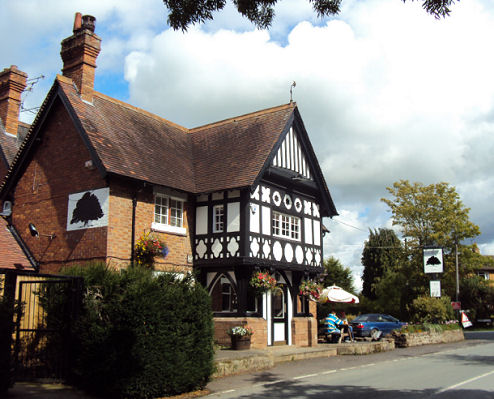
The village, which lies north west of Nantwich, is situated in a predominantly rural area of Cheshire and is mentioned in the Domesday Book as 'Boleberie'. It evovled from three separate settlements. The original village surrounded the church, expansion in Tudor times surrounded the common, the enclosure of common land lead to the further growth of the village around Bunbury Heath. The village contains a few shops and three pubs.
Bunbury Mill dates from the 1840s, although a watermill has occupied the site for around 700 years. The present one was destroyed in 1968, but has been restored. The village also has facilities for cricket and tennis.
St. Boniface's Church
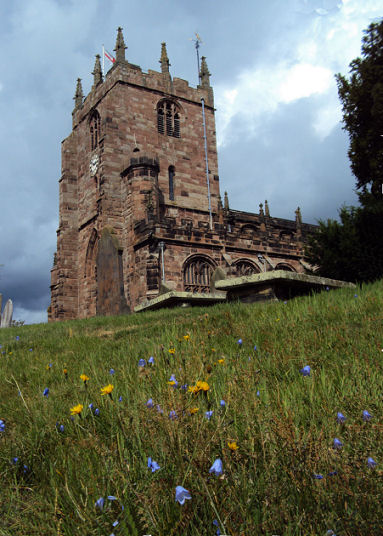
The medieval village church, a grade I listed building, which was included by Alec Clifton-Taylor in his list of 'best' English parish churches, stands above the River Gowy and consists of a great tower, nave, chancel and a south chapel.
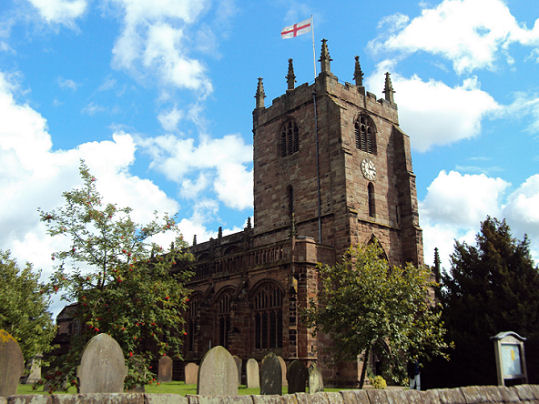
A church has occupied the site since the eighth century, when a wooden Anglo-Saxon church stood here, traces of burnt wood from this church have been found beneath the twelfth century foundations of some piers of the nave. By 1135 a stone Norman church had been constructed. The church was rebuilt in the decorated style in 1320. In 1385-86 Sir Hugh Calveley, companion in arms of the famous Black Prince, endowed it as a collegiate church, which resulted in more rebuilding. Much of the existing structure dates from this time. A chantry chapel was added in 1527 by Sir Rauph Egerton of Ridley, the uppermost sections of the tower are a sixteenth century addition. The nave galleries date to the eighteenth century. From 1863-66, extensive restoration work was done by when the wall paintings, galleries, and box pews were removed, the floor was tiled, and a new roof was constructed. The roof was replaced in 1950 by Marshall Sisson.
The nave

The church appears remarkably wide and light. This is in part because of the slender columns of the nave, the large windows in the north and south walls and the additional light from the clerestory. The present chancel screen is not old, but dates from 1921. It was designed and installed by Fred Crossley, the Cheshire church-historian. The octagonal stone font is dated 1662. The Baroque brass chandelier is dated 1756.
St Boniface contains a number of carved alabaster and stone effigies, most notable are those to Sir Hugh Calverley and Sir George Beeston. The effigy of Sir Hugh Calverley, which lies in the chancel, is the earliest surviving alabaster effigy in Cheshire. He paid for the rebuilding of the chancel and bequeathed funds for a chantry chapel with eleven priests. The effigy was originally coloured and traces of these colours are still visible. Sir Hugh fought at the battle of Auray in 1364 and is mentionioned by the historian Froissart for his role in the battle of Navarete in 1367. He was later appointed governor of Brest. He was said to have been distinguished by his height and was reported to have stood about seven feet tall and could fight like ten men.
Effigy of Sir Hugh de Calvarley (c1315-94), companion in arms to the Black Prince
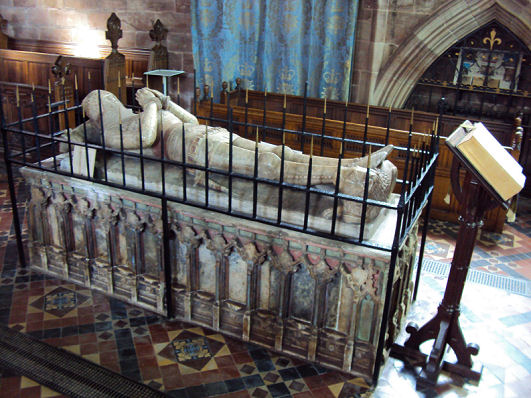
Within the altar rails is the elaborate tomb of Sir George Beeston, restored to its original colours in 1937. George Beeston, a descendant of Sir Hugh Calverley, was born in 1499 and accompanied Henry VIII on his invasion of France. At the age of 89, during the reign of Elizabeth I, he commanded the ship the Dreadnought in the battle against the Spanish Armada.
The Elizabethan tomb of George Beeston

On the south aisle wall there are a number of interesting painted panels depicting the saints which date to 1450, formerly part of parclose screens, the paintings were restored by the Victoria and Albert Museum in 1988.
Doorway in the Ridley Chantry Chapel
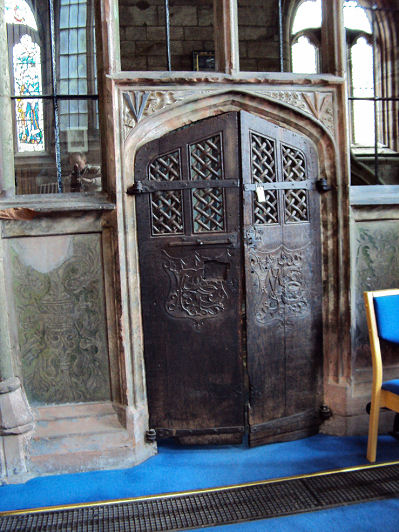
The Ralph Egerton chantry chapel, on the south side of the chancel, otherwise known also as the Ridley Chapel, was constructed in 1527. It has notable carved wooden doors with intricately carved trellis work. Linenfold panelling, resembling draped cloth, survives on the lower half. On the reverse are carved the monograms of Sir Ralph and his wife Mary. The manor of Ridley was granted to Sir Ralph Egerton by King Henry VIII, in reward for taking the French standard at Tournay. Ralph was the second son of Philip Egerton and received his knighthood from Henry in 1513 for his heroic conduct at the battle of the Spurs, and the seiges of Tourenne and Tournay. He was later made the king's Standard Bearer for life . Until the seventeenth century, Sir Ralph's marble chest-tomb with his name and arms upon it stood in the centre of the chapel. It was probably destroyed during the Civil War.
Bunbury Locks, a working wharf with staircase locks is situated around a mile north of the village. The locks were once an important stopping place on the Chester Canal, which was constructed in in the 1770's to link Chester and Nantwich. The canal warehouse stands beside the locks. Canal Cruisers were once built in the long building beside the locks.
Nearby places of interest
Beeston Castle dramatic sandstone castle, perched on a hill, dating back to 1225 and founded by Ranulf, the sixth Earl of Chester.
Peckforton Hills form a significant part of the longer Mid Cheshire Ridge. Rugged sandstone outcrops, lofty trees and panoramic views both east and west across a patchwork landscape.
Cheshire Workshops a visitor attraction providing fun and entertainment for all ages set in the picturesque village of Burwardsley. Candle making has been a craft at Burwardsley for over fifty years when these unique hand carved candles were first made. Ancient candle making skills are still practiced at the workshop.
